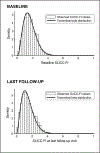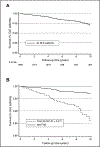Evaluating the Properties of a Frailty Index and Its Association With Mortality Risk Among Patients With Systemic Lupus Erythematosus
- PMID: 30771242
- PMCID: PMC6663648
- DOI: 10.1002/art.40859
Evaluating the Properties of a Frailty Index and Its Association With Mortality Risk Among Patients With Systemic Lupus Erythematosus
Abstract
Objective: To evaluate the properties of a frailty index (FI), constructed using data from the Systemic Lupus International Collaborating Clinics (SLICC) inception cohort, as a novel health measure in systemic lupus erythematosus (SLE).
Methods: For this secondary analysis, the baseline visit was defined as the first study visit at which both organ damage (SLICC/American College of Rheumatology Damage Index [SDI]) and health-related quality of life (Short-Form 36 [SF-36] scores) were assessed. The SLICC-FI was constructed using baseline data. The SLICC-FI comprises 48 health deficits, including items related to organ damage, disease activity, comorbidities, and functional status. Content, construct, and criterion validity of the SLICC-FI were assessed. Multivariable Cox regression was used to estimate the association between baseline SLICC-FI values and mortality risk, adjusting for demographic and clinical factors.
Results: In the baseline data set of 1,683 patients with SLE, 89% were female, the mean ± SD age was 35.7 ± 13.4 years, and the mean ± SD disease duration was 18.8 ± 15.7 months. At baseline, the mean ± SD SLICC-FI score was 0.17 ± 0.08 (range 0-0.51). Baseline SLICC-FI values exhibited the expected measurement properties and were weakly correlated with baseline SDI scores (r = 0.26, P < 0.0001). Higher baseline SLICC-FI values (per 0.05 increment) were associated with increased mortality risk (hazard ratio 1.59, 95% confidence interval 1.35-1.87), after adjusting for age, sex, steroid use, ethnicity/region, and baseline SDI scores.
Conclusion: The SLICC-FI demonstrates internal validity as a health measure in SLE and might be used to predict future mortality risk. The SLICC-FI is potentially valuable for quantifying vulnerability among patients with SLE, and adds to existing prognostic scores.
© 2019, American College of Rheumatology.
Figures



References
-
- Strand V, Chu AD. Measuring outcomes in systemic lupus erythematosus clinical trials. Expert Rev Pharmacoecon Outcomes Res 2011;11:455–468. - PubMed
-
- Gladman D, Ginzler E, Goldsmith C, Fortin P, Liang M, Urowitz M, et al. The development and initial validation of the Systemic Lupus International Collaborating Clinics/American College of Rheumatology damage index for systemic lupus erythematosus. Arthritis Rheum 1996;39:363–369. - PubMed
-
- Alarcón GS, Roseman JM, McGwin G, Uribe A, Bastian HM, Fessler BJ, et al. Systemic lupus erythematosus in three ethnic groups. XX. Damage as a predictor of further damage. Rheumatology (Oxford) 2004;43:202–205. - PubMed
-
- Cardoso CRL, Signorelli FV, Papi JAS, Salles GF. Initial and accrued damage as predictors of mortality in Brazilian patients with systemic lupus erythematosus: a cohort study. Lupus 2008;17:1042–1048. - PubMed
Publication types
MeSH terms
Grants and funding
- M01 RR000046/RR/NCRR NIH HHS/United States
- UL1 TR000150/TR/NCATS NIH HHS/United States
- UL1 RR025741/RR/NCRR NIH HHS/United States
- UL1 TR001422/TR/NCATS NIH HHS/United States
- MOP-88526/CIHR/Canada
- P30 AR072579/AR/NIAMS NIH HHS/United States
- R01 AR043727/AR/NIAMS NIH HHS/United States
- A3865/Danish Rheumatism Association/International
- R01 AR069572/AR/NIAMS NIH HHS/United States
- P60 AR064464/AR/NIAMS NIH HHS/United States
- P60 AR048098/AR/NIAMS NIH HHS/United States
- K24 AR002138/AR/NIAMS NIH HHS/United States
- WT_/Wellcome Trust/United Kingdom

